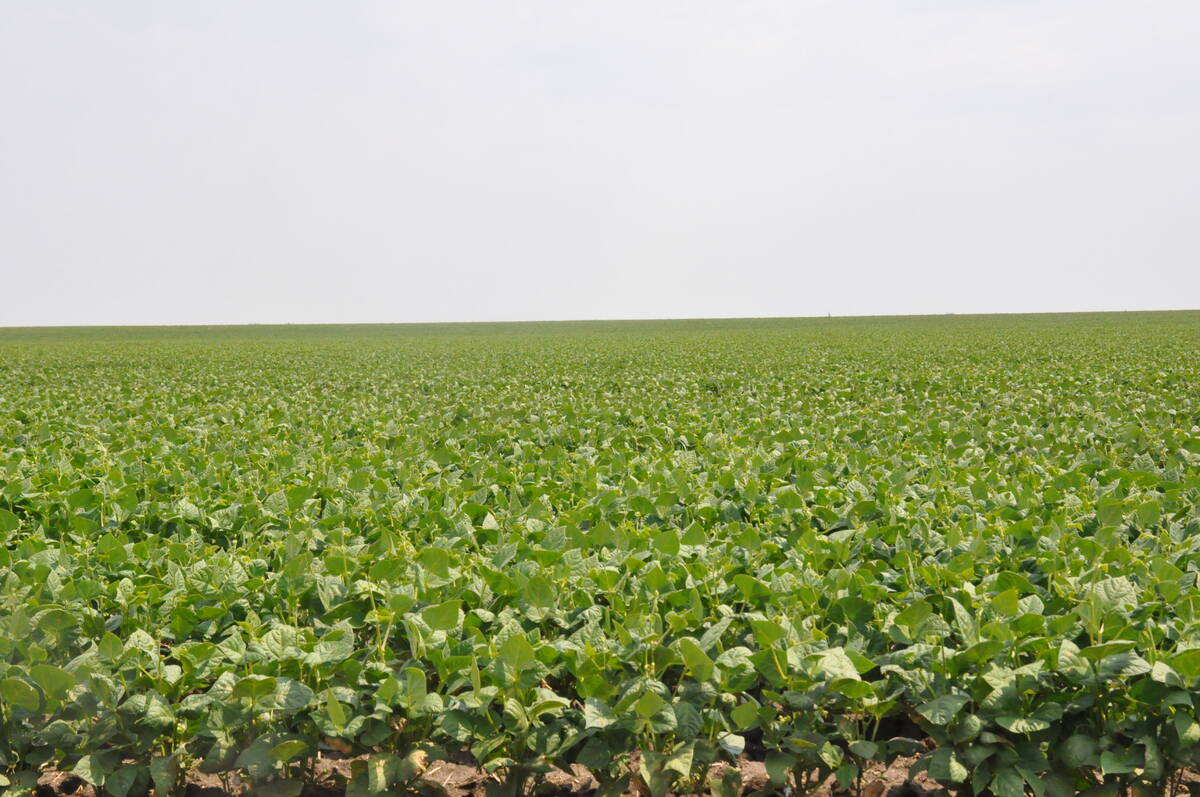NINGA, Man. – Horse and rider cut easily around the barrels set up in an outdoor pen. Training is in session.
A short while later, Paul Unrau dismounts, unsaddles the horse and heads to the house for coffee and to chat with neighbor Larry Hicks, who has stopped by for a visit.
The conversation turns to horses.
“I think about horses when I wake up in the morning and I think about them when I go to bed at night,” said Unrau, who is dressed in his usual attire of jeans and a long-sleeved shirt.
Read Also

Coloured bean production down, whites are up
Bean prices have been slumping and the outlook is for more of the same.
“Sometimes I get a headache thinking about them.”
Unrau, 47, farms south of Ninga, Man. His preoccupation with horses began during his childhood on a farm. He was nine years old when he first hopped on a horse. He thought the best way to train the animal was to simply get on and go. The horse taught him otherwise.
“I’d just as soon forget that day,” said Unrau, a tall, slim man with a relaxed manner. “I went for a pretty wild ride and I think I just plain fell off.”
Unrau has grown older and a lot wiser since then. He now trains about 80 horses at his farm each year and doesn’t often get tossed to the turf.
Unrau boards horses at his farm while guiding them toward good performance. It usually takes about a month before the animals are ready to graduate from basic training. The cost for the training ranges between $400 and $600 per animal, including the horse’s room and board.
“I basically start the horses from scratch,” Unrau said. “You start real easy and keep building that up.”
Unrau has spent much of his life learning about horses. Besides growing up on a farm where horsepower came from something with hoofs, he also rode and roped for the federal government’s Prairie Farm Rehabilitation Administration and worked at a pregnant mares’ urine operation. He continues to ride and rope at the occasional competition as well.
Paul and his wife Gloria married in 1972 and bought their farm seven years later. Cattle and horses have always been a part of their operation. They now own a herd of 30 crossbred cattle that provides much of their income. They also grow hay and pasture on a half section of land that the Unraus own across the road from their main yard.
Paul worked off the farm until 1995 to help pay the bills. He was able to leave that work due to the demand for horse training.
“It can be pretty steady with the horses,” said Gloria. “We just get calls from everywhere.”
She tends the bookkeeping for the farm, looks after a large garden and works at a local cafe two days a week. She enjoys rural living and feels saddened by the number of abandoned farm sites in the area. Many smaller farms were bought out by larger ones in the past 20 years.
“It’s not a real easy road,” said Gloria, describing life on the farm. “But I think it’s one of the better lives you can have.”
Paul’s passion for horses is shared by their 17-year-old daughter Melissa. She rides in competitions and belongs to a 4-H horse club known as Boissevain Boots and Bits. She also helps with chores at the farm.
Now in Grade 12, Melissa remains undecided about what she wants to do after completing school, but she is entertaining some ideas.
“I think if I did something like massage therapy, I’d still have the horses,” she said. “I think they’d always be there.”
The Unraus also have two sons, Billy, 26, and Geoffrey, 22. Billy works for a company in the United States that specializes in installing underground wiring. Geoffrey and his wife, Kelly, live in Boissevain, a community about 10 kilometres west of Ninga. Geoffrey works in construction and he and Kelly are youth leaders at the Mennonite Brethren Church there.
While both sons enjoy rural life neither has plans to begin farming.
Meanwhile, Paul finds it hard to imagine a time when he will stop. In fact he wants to increase the number of riding clinics he offers.
Riders need to know how to understand and communicate with their horses, he said.
“I always say that if you’re having a problem with your horse, you should go look in the mirror. That’s probably where the problem is.”
“I always say that if you’re having a problem with your horse, you should go look in the
mirror. That’s probably where the problem is.”














